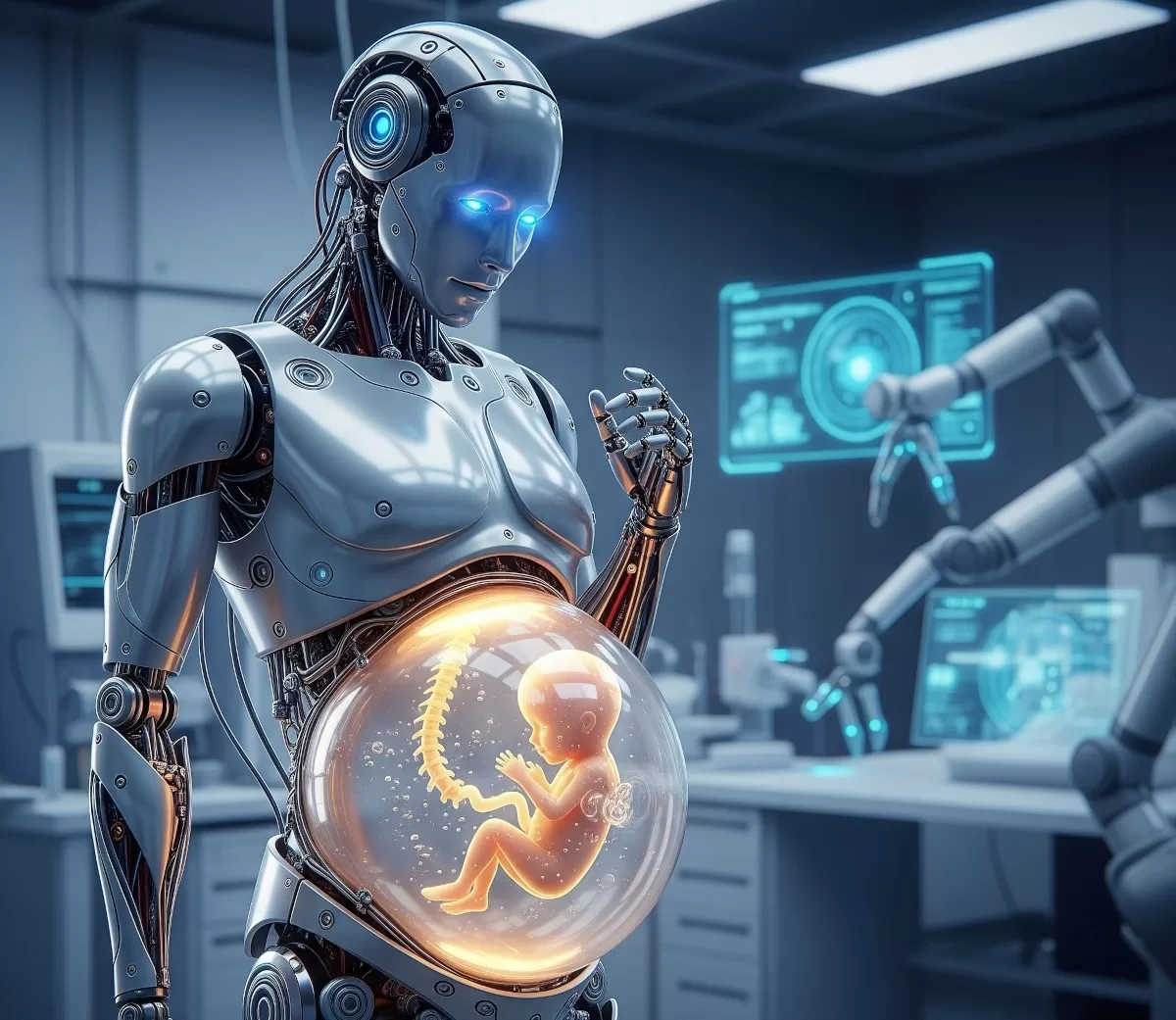Alright, you probably aren’t ready for this but there’s some wild news coming out of China that could seriously change how we think about making babies. A Chinese company, Kaiwa Technology, is working on something straight out of a science fiction novel: a humanoid robot capable of carrying a pregnancy using an artificial womb. Yes, you read that right.
The plan is to unveil a prototype of this “pregnancy robot” by 2026. Their ambitious goal is for these robots to manage the entire process, from fertilisation to a full-term birth. And for those wondering about the cost, they’re looking at a price tag of around 100,000 yuan, which translates to roughly US$13,900.
That’s impressively cheap when compared to traditional surrogacy options (when another woman carries a pregnancy for intended parents). In the US, that can easily range from US$100,000 to 200,000 or more.
How Does This Even Work?
This mind-boggling innovation boils down to artificial womb technology. While the concept of supporting life outside the body isn’t entirely new (remember those “biobags” that kept premature lambs alive in 2017?), Kaiwa Technology is taking it further.
They aim to put a fully functional artificial womb into a humanoid robot, allowing it to sustain a complete pregnancy.
The artificial womb itself would be a controlled environment, filled with synthetic amniotic fluid. Nutrients would be delivered to the growing baby via a tube, like an umbilical cord.
Dr. Zhang Qifeng, the lead on this project, says that the artificial womb tech is already mature in laboratory settings. The next big step is fitting it into a robot that can interact with people to initiate and manage the pregnancy.
Why though? Seriously
So, what’s driving this crazy leap in reproductive science? A major factor is China’s growing infertility rates.
Figures show a significant jump from about 12% of couples experiencing infertility in 2007 to 18% by 2020. For millions, conventional fertility treatments can be a long, often disappointing, and expensive journey.
Reports say many within China are looking at this robotic solution with hope in their hearts. It could provide an alternative path to parenthood for those unable to conceive naturally or individuals who just don’t want to go through a biological pregnancy.
The Big Questions: Ethics, Law, and Society
Unsurprisingly, such a development doesn’t come without some complex ethical and legal questions. Critics are already voicing concerns that outsourcing pregnancy to machines could alter our understanding of:
- Maternal bonds: What kind of connection is formed when a robot carries a child?
- Parenthood: How do we define roles and responsibilities in such a scenario?
- Commodification of birth: Could this turn the act of childbirth into a mere transaction?
- Legal frameworks: Who is legally considered the parent? What rights would a child born this way have? And how do we prevent potential black markets for genetic material or these artificial wombs?
Apparently, authorities in China’s Guangdong Province are already engaging in discussions with Kaiwa Technology to tackle these legal and ethical challenges.
What Does This Mean for Zimbabwe and SADC?
While this technology is still years away from becoming a reality, and its full implications are yet to be understood, it shows the rapid pace at which reproductive science is moving globally.
For us here in Zimbabwe and the SADC region, where family, tradition, and community hold immense cultural significance, this raises fascinating questions.
Could such technology ever find its way into our societies? What would it mean for our social norms, our understanding of lineage, and what it means to bring a new life into the world?
Can you imagine telling your uncles that a robot will be having your baby? I would so love to attend the meeting where the brave Zimbo who gets this robot tells their family about it.
“Arikuda kuita mwana nechirobot ka mwana waShadreck,” and similar statements would open the account in family group chats, and the uncle who dabbles in spirit medium type stuff will pour out alcohol on behalf of the wayward child.
These are not easy questions, and while the technology may seem distant, the conversations around its potential impact need to start now.
Whether this “pregnancy robot” ultimately becomes a celebrated achievement or a cautionary tale will largely depend on how society chooses to embrace and regulate it. One thing is for certain: the future of human reproduction is getting incredibly interesting.

Leave a Reply Cancel reply